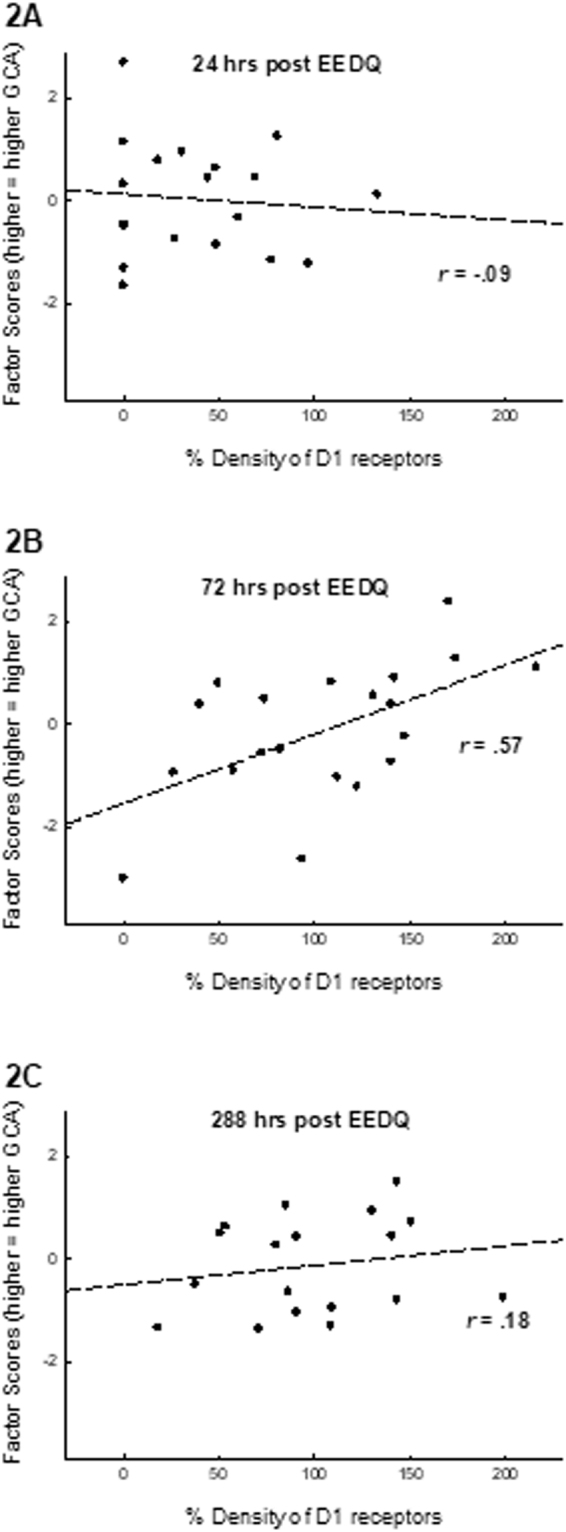Figure 2.

Recovery rate of D1 receptors as a function of GCA. Animals from the high and low GCA samples (see Fig. 1) were administered EEDQ (8 mg/kg), which irreversibly binds the D1 receptor. Receptors that can be detected after EEDQ injection are indicative of newly available receptors. Control animals received vehicle injections and served as a baseline from which to normalize protein levels. All animals were then sacrificed 24 hours, 72 hours, or 288 hours (12 days) after the injection of EEDQ. D1 receptors and DRiP78 in the mPFC were estimated using a DRD1 ELISA kit and DRiP78 ELISA kit. Panel A: 24 hours after EEDQ administration, D1 receptor levels were substantially reduced, and no relationship was observed between D1 levels and animal’s general cognitive performance. Panel B: Partial recovery of D1 receptors was observed 72 hrs after EEDQ, and the the degree of recovery was related to animal’s GCA, r (18) = 0.57, p = 0.009, such that high GCA animals expressed a higher density of new D1 receptors. Panel C: By 288 hrs after EEDQ administration (when recovery of D1 receptors would have been complete), no relationship was observed between D1 levels and GCA. In total, this analysis indicates that under normal resting conditions, D1 levels are not related to GCA, while the rate of turnover of the D1 protein is positively related to GCA.
